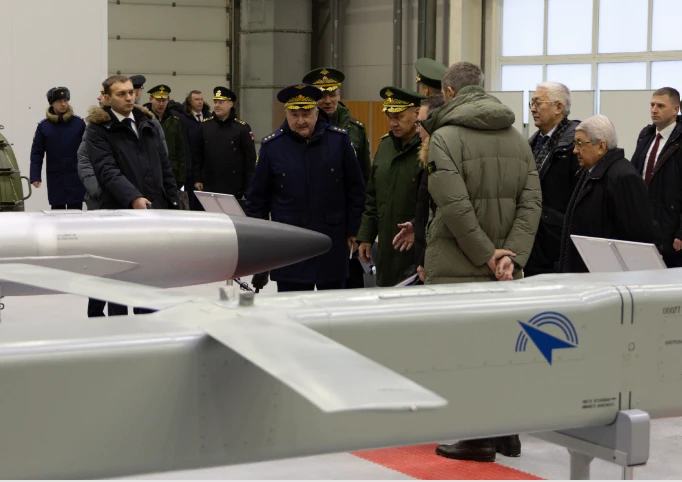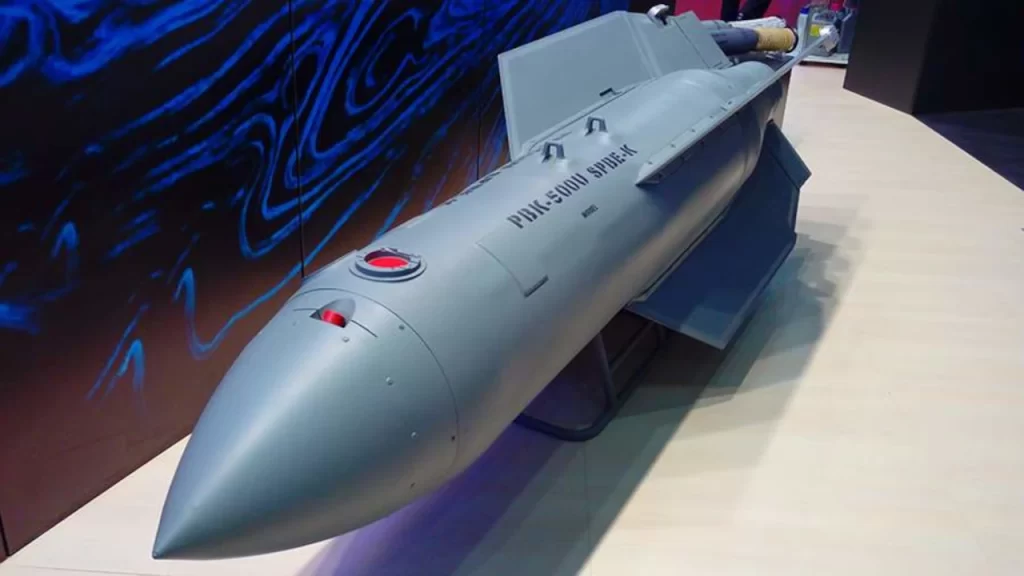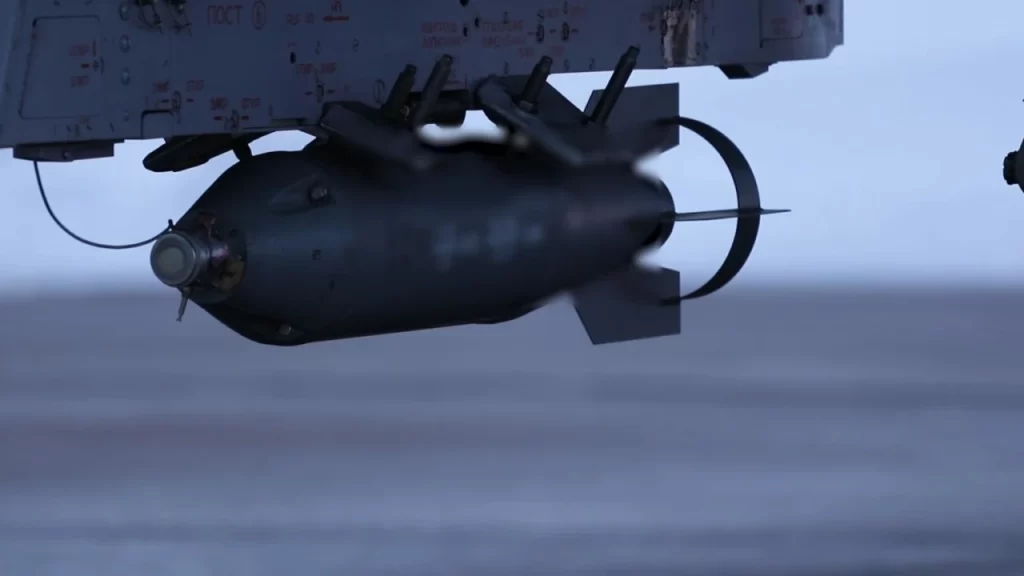In May 2023, Yuri Ignat, a spokesman for the Air Force of the Armed Forces of Ukraine, told Western media that the use of Russian-guided bombs could force Ukraine to change its plans for operations since the country was getting ready for a counter-offensive. According to Yuri Ignat, these weapons are a grave danger. He also said that the Russian military has been “intensively using” them for about a month. Russian news outlets earlier said that their country had started using 40–60 km guided bombs in Ukraine.
Colonel Roman Kostenko, Secretary of the Verkhovna Rada Committee on National Security, Defence, and Intelligence, revealed in December 2023 that the Ukrainian Armed Forces (AFU) cannot counter Russian gliding bombs.
This month, the New York Times reported that personnel of the Ukrainian armed forces said that they have been suffering from the devastating power of gliding bombs since March 2023, and even those Ukrainian troops who are accustomed to bombardment are affected by them. A Ukrainian National Guardsman going by the call sign Keith is quoted in the publication as saying that the Russians send them out in pairs, eight times an hour. He remarked that it appeared like a jet was heading in your direction, almost like the gates of hell were opening.
Furthermore, the operational activities of Russian drones have a significant repercussion on the Ukrainian military. Provisioning operations along the front line have been rendered “more perilous” as a consequence; the Ukrainian forces have ceased using equipment to access their positions due to the drone use. Automobile travel is extremely hazardous; all movement must be accomplished on foot. NYT quotes a Ukrainian National Guardsman with the call sign Varvar saying the Ukrainian troops are dismounting approximately 10 kilometres from their positions.
Russian Bombs Move Up the Precision Ladder
On January 18, the Russian Ministry of Defence published news of Sergei Shoigu, the Russian Defence Minister General of the Army, examining the implementation of state defence orders at the State Machine-Building Design Bureau Raduga named after A. Ya. Bereznyak, located in the Moscow region. Images from his tour of the defence-industrial complex firms in the Moscow region were also published. These enterprises were a Tactical Missile Weapons Corporation (TRV) component.
The images show that Shoigu paid special attention to increasing the production of high-precision, high-power ammunition. One of the photographs displayed a full-scale model of the more recent version of the ariel bomb with a calibre of 1500 kilogrammes, which featured a guided planning and correcting mechanism.

Guided planning and correction modules for equipping free-falling aviation bombs with calibres of 250, 500, and 1500 kg have proven themselves during a special military operation, Shoigu said.
Not only did the head of the Russian military give the order to boost the production of high-precision ammunition, but he also gave the order to modernise it. This meant that a particular line of ammunition was to be moved from the category of ordinary ammunition, which the Ministry of Defence of Russia holds in adequate amount, to the category of high-precision ammunition.
According to Shoigu, there is currently a successful experience and good results; nonetheless, this work needs to be broadened. He said the primary warfare work is now carried out not over geographic areas but rather particular targets.
Consequently, Boris Obnosov, the Chief Executive Officer of TRV, announced that the state defence order 2023 had been completely satisfied by the firm that was inspected. The manufacturing volumes of high-precision means of destruction in this region have surged by a factor of five since the beginning of the special military operation in Ukraine. This is because particular positions are in tremendous demand. This was made feasible due to the expansion and modernisation of production, the rise in staff, the improvement in labour productivity, and the transition to a work pattern that was “24 hours a day, seven days a week.”
After the visit, Shoigu mentioned that the unified high-precision jam-resistant ammunition system is currently in the final testing stage during a meeting with industrialists and armed forces representatives. His statement could have been a reference to the Drell Precision Glide Bomb that was being tested.
In addition to this, he mentioned that the Tactical Missile Weapons Corporation had accomplished the tasks of increasing the accuracy of hits and the interference resistance of ammunition, as well as organising the serial production of guided and correction modules, guided modular bombs, and control units for rocket projectiles.

The Russian Aerospace Force employing these precision bombs was the subject of another press release. In the vicinity of Krasny Liman, the Russian multi-role fighter-bombers Su-34 attacked the fortified region on the opposing side. The strike was carried out with unguided aviation bombs FAB-500 equipped with a universal planning and correction module (UPCM), which enables precise strikes to be carried out safely away from the line of contact. The release of the bomb from the external suspension pylons of the aircraft happened beyond the reach of the adversary’s air defence system. Surveillance confirmed that all enemy targets were destroyed, and the aircraft that participated in the mission returned to the home airfield without incident.
Trajectory correction utilising signals from the Global Navigation Satellite System (GLONASS) improves the accuracy of directing aviation munitions. Furthermore, upon deployment, the Universal Planning and Correction Module (UPCM) wings unfold autonomously, enabling the bomb to travel a distance numerous times greater than the carrier aircraft’s location.
Another statement from the Russian Ministry of Defence states that the efficacy of hostile fire suppression is substantially enhanced through high-precision ammunition, as demonstrated by the results of the special military operation. For instance, reactive multiple-launch rocket systems (MLRS) transform into precision weapons that exhibit enhanced firepower efficiency. Using the Tornado-S system with 300 mm calibre missiles substantially enhanced shooting efficacy, supplanting the MLRS types Smerch and Uragan of the past. This resulted because the system in question “includes guided reactive projectiles and unguided projectiles for striking area targets, which are used effectively in special military operations to target specific objects selectively.

In addition to the Tornado-S, troops continue to receive medium-calibre (122 mm) Tornado-G MLRS. Guided reactive projectiles have also been created for it.
The Russian Defence Ministry also highlights improvements to barrel artillery. According to the ministry, new high-precision munitions have been created to target individual targets selectively. According to the ministry, the guided artillery shell “Krasnopol-M2” development is complete, and in many ways, it outperforms its predecessor “Krasnopol.” It is “effectively used during special military action.” Furthermore, for the “Coalition” system, high-precision ammunition with extended range has been created for the 152 mm Coalition-SV complex and current 152 mm artillery systems. Their testing is due soon, according to the announcement.
The effectiveness of artillery and missile units in performing combat is enhanced by a significant increase in the count of unmanned aerial vehicles (UAVs) in the army. They remain the most effective means of obtaining reconnaissance information, the Russian Ministry of Defense states. UAVs are successfully used as part of reconnaissance-strike complexes, providing fire damage to identified targets in real-time and illuminating targets when using modern high-precision ammunition such as “Krasnopol-M2.”
The effectiveness of missile and artillery units is also increased by the use of drones, “which increases the efficiency of artillery fire and survivability on the battlefield,” as well as the “use of modern artillery reconnaissance tools, such as ‘Zoopark-1M’ and ‘Yastreb-AV.'”
Artillery regiments are provided with well-proven, modernised, self-propelled howitzers called “Msta-S.” During the special operation, self-propelled 82 mm mortars “Drok,” self-propelled 120 mm artillery guns “Flox,” and self-propelled 152 mm artillery guns “Malva” are also operationally and battle-tested, demonstrating their excellent tactical and technical capabilities.
The Russian Ministry of Defence also says that all missile units have been given the latest operational-tactical missile system, called “Iskander-M,” which is still the best weapon in its class.
